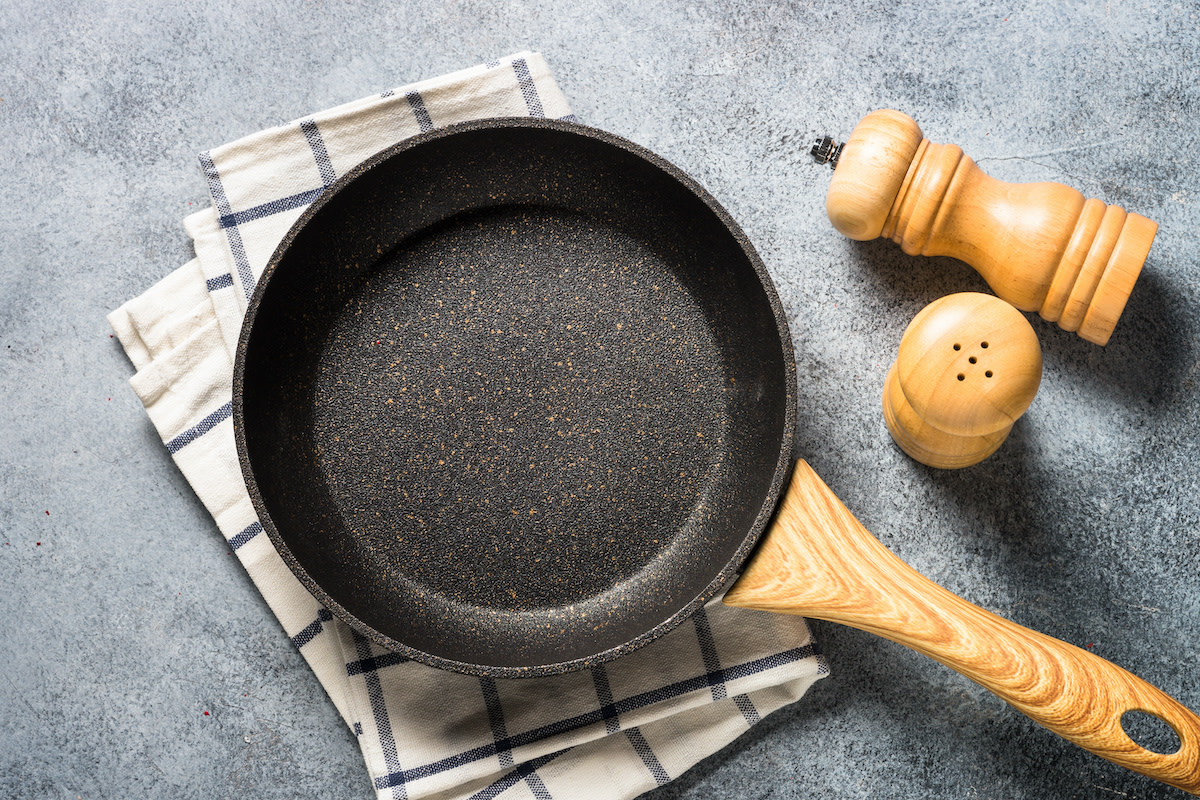Food
How to Clean Non-Stick Pans in 4 Simple Steps
Written by MasterClass
Last updated: Nov 30, 2021 • 2 min read
Learn how to clean non-stick pots and pans properly to improve the lifespan and quality of your cookware.
Learn From the Best
How to Clean Non-Stick Pans
Follow these basic steps for cleaning non-stick cookware.
- 1. Allow the pan to cool completely. When you’re finished cooking, allow your pan to cool completely on the stovetop. Soaking or rinsing a hot pan in cold water could warp the pan and ruin the non-stick surface.
- 2. Rinse the pan with warm, soapy water. As soon as the pan cools, rinse it with lukewarm water to remove any food particles from the pan's surface. Use warm water instead of hot water to improve your pan's longevity.
- 3. Scrub the pan with a sponge and dish soap. Apply dishwashing liquid directly to a soft sponge or washcloth. Scrub the entire surface of the pan to remove all the remaining food residue. Rinse the pan thoroughly.
- 4. Dry the pan thoroughly. Use a clean, soft cloth to dry the cookware. Store your cookware on a vertical dish rack or place a paper towel between stacked pans to protect the non-stick surfaces from getting scratched.
5 Tips for Cleaning Non-Stick Pans
Consider these cleaning tips to get the most of your non-stick cookware.
- 1. Remove burnt build-up with baking soda. For extra dirty pans, mix a teaspoon of baking soda with a teaspoon or two of water to form a paste. Rub it on the frying pan with a non-abrasive scrubber to remove burnt food and residue.
- 2. Avoid cooking sprays and cooking oils with low smoke points. Non-stick cooking sprays and low-smoke-point oils (such as olive oil) burn easily and cause unwanted grime to build up on the pan's surface. Instead, use cooking oils with a high smoke point such as canola, avocado, or sesame oil.
- 3. Always wash your pans by hand. Although some non-stick pans are advertised as dishwasher-safe, you should always hand wash your non-stick pots and pans for the best results. The high heat and abrasive detergents used by dishwashing machines can damage the non-stick coating on your cookware, shortening its lifespan.
- 4. Use non-abrasive scrubbers and sponges. Though steel wool and scouring pads may be acceptable for stainless steel or cast iron skillets, they will wreak havoc on Teflon or ceramic non-stick surfaces. Use a soft sponge or washcloth instead.
- 5. Apply a drop of oil before and after use. Though non-stick cookware does not need to be seasoned like cast iron cookware, it can benefit from a thin layer of oil after cleaning. Pour half of a teaspoon of cooking oil onto the pan's surface and rub it all over with a clean cloth or paper towel.
Want to Learn More About Cooking?
Become a better chef with the MasterClass Annual Membership. Gain access to exclusive video lessons taught by the world’s best, including Gordon Ramsay, Gabriela Cámara, Chef Thomas Keller, Dominique Ansel, Yotam Ottolenghi, Alice Waters, and more.
